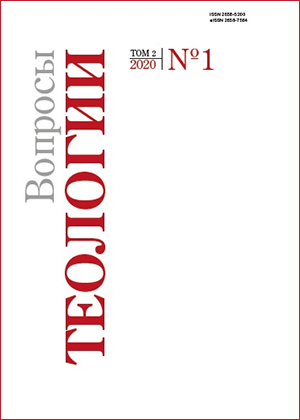“Will the judge of all the earth not do justice?” A note on Genesis, Protagoras, and theodicy
DOI:
https://doi.org/10.21638/spbu28.2020.107Abstract
This article argues that the introduction of the Hebrew words for judge and justice, which occurs only late in the text of Genesis is not fortuitous. Abraham introduces these terms in the context of his argument with God that He spare Sodom and Gomorrah if a number of righteous men can be found there. This happens long after the invention of human arts and institutions including the city and the execution by God of several notable and severe judgments against individuals and indeed all the living world. The words shopheṭ and mishpaṭ, one proposes, adumbrates a new and different kind of justice than what existed before one based on equality under law and on a procedure of advocacy and argument rather than mere Divine fiat. Since God accepts unquestioningly Abraham’s unprecedented definition of Him as “Judge of the world,” one might further suggest that the Master of the Universe in the course of the evolving covenantal relationship with mankind is allowing His creatures to discover aspects of Him that were hitherto unknown to them and unknowable till they developed further. In both its character and the sequence of the events that unfold, the Biblical narrative is in some respects closely parallel to the myth of human genesis and cultural development, followed by the introduction of justice, in the Protagoras of Plato. Since the latter myth is connected to the progeny of Iapetos, who may be identical with Biblical Japheth, it is possible that the two narratives, Hebrew and Hellenic, may share common, possibly Semitic, roots.
Keywords:
Abraham, Moses, shopheṭ, mishpaṭ, theodicy, Marina Tsvetaeva, Zoroastrianism, Mi‘raj, the Berdichever Rebbe, Plato, Protagoras, Athens
Downloads
References
References
Downloads
Published
Issue
Section
License
Articles of "Issues of Theology" are open access distributed under the terms of the License Agreement with Saint Petersburg State University, which permits to the authors unrestricted distribution and self-archiving free of charge.




